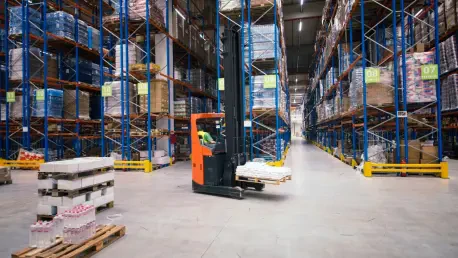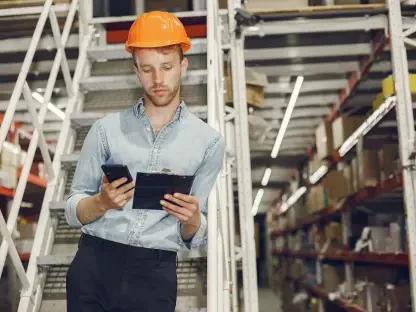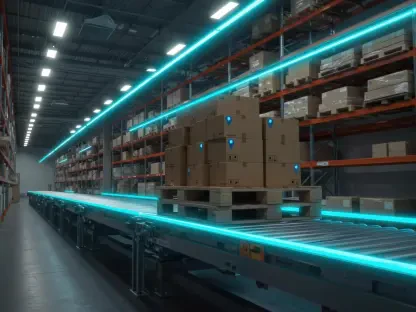With decades of experience at the forefront of logistics, Rohit Laila is a visionary in supply chain innovation and technology. In this interview, we dive into the dynamics of modern warehouse technology, highlighting Lucas Systems’ cutting-edge Dynamic Pallet Builder and its transformative impact on the logistics sector. Rohit provides insights into how this solution optimizes operations through real-time adaptability and smart technologies, shaping the future of the industry.
Can you explain what the Dynamic Pallet Builder technology is and how it works?
Dynamic Pallet Builder is an advanced software solution designed to improve the efficiency and accuracy of warehouse operations. It processes a multitude of data points to optimize the picking, grouping, sequencing, and stacking of items on pallets. By calculating thousands of operations per minute, it dynamically adjusts to the specific needs of a warehouse, ensuring that pallets are built with the most favorable balance between speed and quality.
What are the main benefits of using dynamic pallet building over traditional methods?
Dynamic pallet building offers several advantages over traditional methods. It reduces load damage and enhances safety by predicting the most stable configurations for products. Additionally, it optimizes warehouse workflows by lowering unnecessary travel and inefficient pick paths, which saves on labor costs and boosts throughput. It’s especially beneficial for swiftly adapting to changes in volume or order composition, making operations more agile and cost-effective.
How does the Dynamic Pallet Builder handle different variables like product size, weight, and stacking rules?
The system considers an extensive array of variables, such as product dimensions, weight, and even stacking protocols. It uses sophisticated algorithms to evaluate these factors in real time, crafting a pallet configuration that adheres to shipping regulations and warehouse priorities. This ensures that each pallet is not only secure for transport but also efficient for warehouse handling.
In what ways does dynamic pallet building contribute to reducing load damage and improving safety?
By constructing more stable and balanced pallet arrangements, dynamic systems substantially lower the risk of product shifting and breakage during transit. This directly reduces safety risks and prevents costly returns or delays. Stable loads safeguard workers and equipment, which further contributes to an overall safer warehouse environment.
How does the technology help in minimizing worker travel distance and optimizing pick paths?
Dynamic pallet building strategically plans pick paths to minimize unnecessary movement across the warehouse. By optimizing how items are sequenced and grouped, it reduces the distance workers have to travel, cutting down on energy and labor costs while significantly enhancing productivity.
Can you provide examples of how dynamic pallet building adapts to changes such as seasonal order spikes and evolving warehouse rules?
Dynamic systems are continuously adjusting to real-time data, meaning they can react swiftly to changes like seasonal spikes or shifts in product mixes. If warehouse rules evolve—say due to new regulations—they can instantly integrate these into the pallet-building process, ensuring compliance and efficiency without missing a beat.
How does the Dynamic Pallet Builder integrate with existing warehouse management systems?
The integration process is seamless, as the builder is compatible with various warehouse management systems. Its configuration allows it to align closely with a company’s operations, meaning it can accommodate existing processes without demanding substantial changes, preserving operational flow while enhancing efficiency.
What makes the Dynamic Pallet Builder highly configurable, and why is this important for businesses?
Its configurability stems from its ability to tailor pallet-building logic to specific business requirements. This adaptability is crucial as it allows companies to personalize the tool to their operations, thus optimizing processes and maximizing productivity. It enables businesses to stay responsive to market demands and shifts.
How does the connection between smarter pallet building and smarter picking impact overall warehouse productivity?
By linking smarter pallet building with picking operations, warehouses can vastly improve productivity. Efficient pallet configurations streamline picking processes, reduce worker travel and transportation mileage, and lead to faster order fulfilment. This synergy boosts operational efficiency and reduces errors.
Could you share more about how Veritable Vegetable utilizes the Dynamic Pallet Builder to optimize its operations?
Veritable Vegetable harnesses the builder to enhance delivery routes, using a voice-directed picking process that precisely splits pallets according to truck and delivery requirements. This customized approach not only increases efficiency but also offers their customers greater flexibility in order placement, a crucial factor for maintaining customer satisfaction.
What role do AI, Machine Learning, and speech recognition play in Lucas Systems’ dynamic solutions?
These technologies are central to augmenting warehouse agility and performance. AI and Machine Learning analyze vast quantities of data, providing insights for optimization. Speech recognition streamlines processes by reducing manual input, offering real-time adaptive solutions that can evolve with warehouse needs.
How does Lucas Systems’ approach differ from fixed or mechanical automation solutions?
Lucas Systems prefers a software-based approach that allows for flexibility and adaptability, unlike fixed mechanical solutions that are rigid and costly to modify. This approach can swiftly adapt to changing business needs without extensive reconfiguration, making it much more cost-effective and agile.
How has the investment in dynamic-driven technologies over the last year enhanced Lucas Systems’ offerings?
Investing in dynamic-driven technologies has enabled Lucas Systems to refine their solutions to meet the demands of complex logistics environments more effectively. These advancements have enhanced their capability to offer agile, intelligent solutions that optimize operations, reduce costs, and improve service delivery.
Can you discuss the importance of warehouse agility in today’s logistics environment?
Agility is vital as it empowers warehouses to swiftly adapt to fluctuating market conditions, customer demands, and operational challenges. An agile warehouse can pivot efficiently, ensuring optimal performance, meeting customer expectations, and maintaining a competitive edge in a dynamic marketplace.
What future advancements or enhancements can we expect from Lucas Systems in the realm of dynamic warehousing solutions?
Lucas Systems is likely to continue its focus on AI and Machine Learning, refining their capabilities to support even more complex warehousing scenarios. We can anticipate further integration of smart technologies that bolster real-time adaptability and smarter decision-making to enhance warehouse efficiency and responsiveness.









